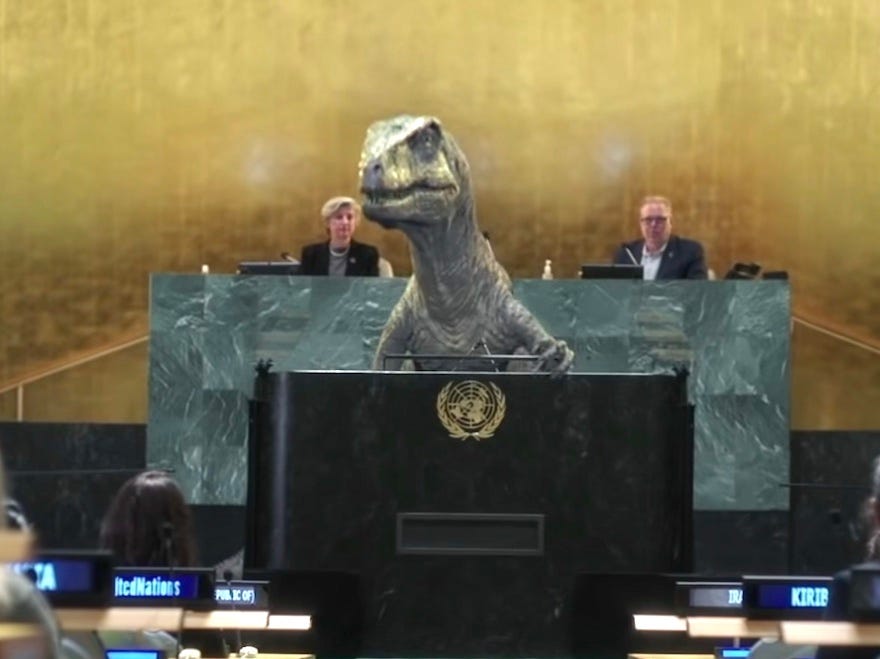Nuclear Fusion, Shiny Objects, and Glitzy Desserts
An advance in basic research makes nuclear fusion the latest shiny object in energy technology. It mustn’t distract from real decarbonization options that are already set for prime time.

With this week’s announcement of a breakthrough in nuclear fusion research, the latest shiny object in energy officially landed.
Scientists and politicians waxed enthusiastic after 192 lasers at California’s Lawrence Livermore Laboratory bombarded a small hydrogen pellet with just over two megajoules of energy and freed up three megajoules of heat, the first time after 70 years of trying that a fusion reaction produced more energy than it consumed.
The experiment ran less than 100 trillionths of a second. It didn’t take much longer to cue the over-the-top celebration.
“Fusion breakthrough is a milestone for climate, clean energy,” The Associated Press headlined.
“Fusion breakthrough could be climate, energy game-changer,” the Globe and Mail enthused.
In fairness, the actual news coverage behind the headlines was more measured, pointing out that practical uses for nuclear fusion are decades away at best.
But the hype isn’t new. A few years ago, one of my daughter’s profs wowed her college class with the idea that nuclear fusion was right around the corner—just as its boosters have claimed since the 1970s or longer. We agreed that if fusion was a viable option by the time she graduated, I would owe her a glitzy dessert. If not, she would buy.
In the end, I bought the dessert because I’d phrased the question imprecisely. I still won the bet because I got to have a glitzy dessert with my daughter.
But it’s a lot tougher to reframe the win if the attention to nuclear fusion draws time, attention, and dollars away from real-world options to drive down emissions and get the climate emergency under control.
The Latest Shiny Object
There’s a lot to be said for basic science that eventually makes life better. We get to take those discoveries for granted every day.
But this shiny object is decades away, at very least, from a power source that will fit safely and reliably into a functioning power plant. That’s if it can compete with clean alternatives that are already stunningly affordable, in a grid that will have to be less centralized to make best use of those technologies while staying ahead of climate change and its impacts.
One veteran research physicist pointed out that the fusion experiment took three decades and US$10 billion to turn 80 kilowatt-hours of electricity into less than one kilowatt-hour of heat. That’s almost enough to power 100 10-watt LED bulbs for an hour (if those bulbs ran on heat, not electricity).
If solar, wind, or energy efficiency developers claimed a breakthrough on those kinds of numbers, they would be laughed out of the room. And rightly so.
But this wouldn’t be the first time the shiny object syndrome has captured the narrative, leaving cleaner, practical, affordable energy choices to play catch-up.
Nuclear fission is constantly on the verge of a renaissance, until costs skyrocket and it suddenly isn’t.
Carbon capture and storage (CCS) is the silver bullet that will give the fossil industry a new lease on life, until 10 of the world’s 13 flagship projects underperform, fail outright, or have to be mothballed.
The fossil industry feverishly promotes natural gas as a “bridge” to a renewable energy future, leaving aside the methane emissions that make it a climate bomb.
“Blue” hydrogen derived from fossil gas is said to be the ticket to faster decarbonization, until it turns out that fossil hydrogen delivers 20% more climate pollution than just burning gas or even coal for heat.
Contrast all of that lost promise and wasted effort with heat pumps, the “most unsexy but essential technology that most people have never heard of,” as one colleague puts it. They’re poised to deliver a real, sustained breakthrough right away. They can make energy poverty a thing of the past. What’s needed is the resources and attention span to manufacture enough devices and train enough installers.
Or how about something even more obscure, the municipal wastewater heat recovery system that will cut Toronto Western Hospital’s heating and cooling needs by 90%? It’s hard to get excited about one hospital reducing emissions by 250,000 tonnes over 30 years when annual global carbon targets are in the tens of billions. But how many hospitals are there across Canada, and around the world? How many other institutions, commercial buildings, and energy districts can adopt or adapt the same proven, affordable technology?
Heat pumps and wastewater heat recovery gear will never deliver as thrilling a photo as 192 lasers in a nuclear fusion lab. But what if steady and boring is a big part of what’s needed to get climate change under control?
How to Spin a Fusion Experiment
There’s also a lot more to nuclear fusion research than energy production.
Last week’s experiment took place at Lawrence Livermore’s National Ignition Facility (NIF), whose basic mission is to help the U.S. maintain its nuclear weapons stockpile.
“The main utility the facility offers nuclear weapons designers and planners is by providing a greater understanding of the underlying science and modernizing these weapons,” writes physicist and prolific nuclear industry critic MV Ramana, in a post that details the formidable science and engineering challenges still facing fusion. “This is a purpose NIF can start fulfilling without ever generating any electricity.”
That creates a different kind of fusion between the civilian and military agendas the lab is meant to serve. NIF and Lawrence Livermore managers “are careful to highlight different promises based on the circumstance they are speaking at,” Ramana writes.
“It depends who I’m talking to in Washington,” one senior official told anthropologist Hugh Gusterson. “One week it can be a weapons project, the next week an energy project.”
Would heat pumps, rooftop solar, and batts of insulation get more political traction if they doubled as weapons of mass destruction rather than workings of mass retrofits? Let’s hope that isn’t what it will take in 2023 to push past the shiny objects and focus on the fast energy transition we need.
Mitchell Beer traces his background in renewable energy and energy efficiency back to 1977, in climate change to 1997. Now he scans 1,200 news headlines a week to pull together The Energy Mix and The Energy Mix Weekender.
You can also bookmark our website for the latest news throughout the week.
Video of the Week






The quest for nuclear fusion is a bit late. Look up. It was mastered by the sun 4.5 billion years ago. The headlines screamed, “Scientists have taken the first step toward cheap, clean and near-unlimited power by harnessing the power of the sun.” We’ve already learned to tap into the sun’s energy using wind turbines and solar panels. We’re done. The headline should be that we don’t need to waste more money, time, and scientific know-how on reinventing nuclear fusion. We already have access to a limitless supply.
Reinventing nuclear fusion is a luxury we can’t afford. Instead, let’s divert the shockingly wasteful efforts on nuclear fusion toward stabilizing the climate, improving photo-voltaic efficiencies, and improving battery technologies … before it’s too late.